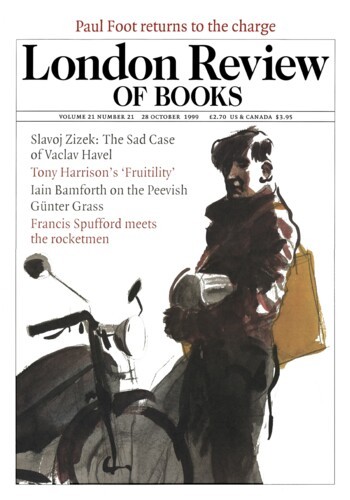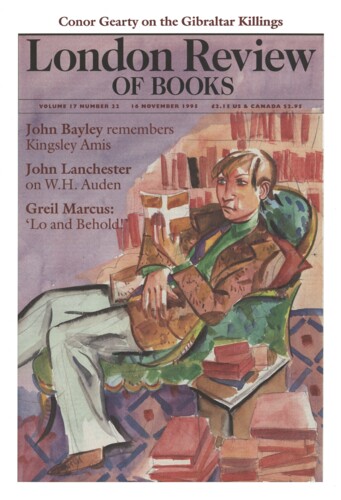Robert Tombs
Robert Tombs is a fellow St John’s College, Cambridge and the author of Paris Commune, 1871.
Interpretations of History
3 March 2011
Dolorism: biography
Robert Tombs, 28 October 1999
The encounter between Alain Corbin and François-Louis Pinagot was at one level fortuitous. The historian picked the dead peasant’s name from the register of births in a provincial archive. He set out to bring him back from oblivion by following the meagre traces left in the bureaucratic records of the French state when the most subordinate of its agents – mayors, foresters, tax collectors – made fleeting contact with, or more often narrowly missed, one of their humblest and least troublesome administrés.’
Countess Bitch
Robert Tombs, 16 November 1995
Who was Gyp? A woman of many names: a sign, suggests Willa Silverman, of her often-expressed unhappiness with her identity, and especially her sex. She was born Sibylle de Riquetti de Mirabeau in 1849, but her family decided to call her Gabrielle when she reached13 because she was too plain for a Sibylle. Married in 1869, to become the Comtesse de Martel de Janville, she lamented that as a woman she could not perpetuate the Mirabeau name, which she often appended to her own. Brought up by a bluff military grandfather, she was in the full sense a garçon manqué, the girl whom everyone, including herself, wished had been a boy and a soldier. She was best known under her pen names, the boyish ‘Bob’ and the sexless ‘Gyp’ (a whiplash sound perhaps, or ‘gyno gone wrong’, suggests Silverman), and was a prominent, if lightweight, literary and political figure from the 1880s to the Twenties. The ‘countess bitch’ to her many enemies, she wrote over one hundred forgotten novelettes and plays. She is probably best remembered now for her political cartoons at the time of the Dreyfus Affair, reproduced in many books as samples of the savage and hysterical polemics of the time. It is regrettable that more of them are not reproduced here, especially those that are analysed in the text. Gyp’s skill and influence lay in the creation of unsubtle, memorable stereotypes, especially of ‘modern’ girls and of Jews. According to Charles Maurras she was, after Edouard Drumont (author of the notorious La France juive),‘the writer who fixed in the minds of French people the most powerful anti-semitic images’.
Exporting the Royals
Robert Tombs, 7 October 1993
Europeans coming to Veracruz during the 19th century were invariably impressed by its large population of vultures and sharks. Those who arrived in the 1860s in pursuit of Napoleon III’s Mexican dream, or who followed in the train of Maximilian von Habsburg in the hope of sharing in the glory and profit of his new empire, found what one French officer called ‘these disgusting animals’ which ‘stalk you like a prey’ a sobering sight. Things were to turn out worse than their worst forebodings.
Podcasts & Videos
England, Their England
David Runciman, Helen Thompson and Robert Tombs
David and Helen talk to the historians Robert Tombs and Robert Saunders about the history of England and the future of the Union.
Pieces about Robert Tombs in the LRB
It took a Scot: English Nationalism
Colin Kidd, 30 July 2015
Until our recent discontents England had never succumbed to doctrinal nationalism. Absent from English history was the obsessiveness found in many countries across Europe about the recovery of...
Read anywhere with the London Review of Books app, available now from the App Store for Apple devices, Google Play for Android devices and Amazon for your Kindle Fire.
Sign up to our newsletter
For highlights from the latest issue, our archive and the blog, as well as news, events and exclusive promotions.





